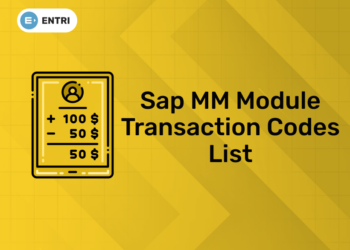Table of Contents
A stock exchange is a facility where stocks are traded. The stock exchanges do not own the stocks. In order to trade in a stock exchange, the enterprises must be listed in that particular stock exchange. The smaller, riskier and less liquid companies which are not listed on the stock exchanges are traded over the counter (OTC). There are 05 stock exchanges in India as of 2024.
The Indian Capital Markets are regulated and monitored by the Ministry of Finance, The Securities and Exchange Board of India(SEBI) and The Reserve Bank of India(RBI). The SEBI(Securities and Exchange Board of India) is the regulatory authority established under the SEBI Act 1992. SEBI is the principal regulator for Stock Exchanges in India. SEBI’s functions include protecting investor interests, promoting and regulating the Indian securities markets. Stock Exchanges in India as an entity regulated by SEBI undergoes regular inspections by them to ensure compliance.
Master stock trading with Trading Experts. Enroll now for a free demo!
Here is the List of Biggest Stock Exchanges in India
There are 9 stock exchanges in India that are functioning at present. They are under the scrutiny of SEBI. Let’s take a look at the table below.
A Complete List of Active Stock Exchanges in India
| Name | Location |
| Bombay Stock Exchange | Mumbai |
| Calcutta Stock Exchange | Kolkata |
| India International Exchange (India INX) | Gandhinagar |
| Indian Commodity Exchange | Navi Mumbai |
| Metropolitan Stock Exchange of India | Mumbai |
| Multi Commodity Exchange of India | Mumbai |
| National Commodity & Derivatives Exchange | Mumbai |
| National Stock Exchange of India | Mumbai |
| NSE IFSC | Gandhinagar |
Top 5 Major Stock Exchanges In India in 2024 And Beyond
1. NSE
The National Stock Exchange (NSE) is the largest stock exchange in India. In terms of market capitalisation, it is also the eleventh-largest stock exchange in the world. You can trade in seven capital market categories at the NSE. They are equities, futures and options (F&O), mutual funds, debt market (both wholesale and retail), currency futures, and lending/borrowing of stocks.
Founded in November 1992, it is headquartered in Mumbai. However, the trading operation started in 1994 after SEBI recognised it as a stock exchange. It is also the first Indian stock exchange to provide its traders with fully computerised electronic trading facilities.
2. BSE
Founded in July 1875, the Bombay Stock Exchange (BSE) is the first stock exchange in Asia, headquartered in Mumbai. However, the Government of India officially recognised it under the Securities Contracts Regulation Act as a stock exchange in August 1957. In 2012, it also joined the initiative of the United Nations Sustainable Stock Exchange.
Currently, it is the fastest exchange in the world, as the median speed of trade of this exchange is 6 microseconds. The total number of stocks listed on the BSE is around 5,000. The most important index of this stock exchange is the Sensex. Other major indices are Bankex, BSE 100, BSE 200, Reality Index, and many more.
3. India INX
At GIFT IFSC, it is the first international exchange. Founded in January 2017, the India International Exchange (India INX) was inaugurated by Indian Prime Minister Narendra Modi. It is regulated by the International Financial Services Centre (IFSC), which works under the Indian Finance Ministry. The India INX exchange is located in Gujarat’s Gandhinagar.
Here, you can trade products of the financial market in this exchange for 22 hours. Most investors/traders trade currency/commodity derivatives, stock/index derivatives, and debt securities. You can also raise cash quickly and in a transparent way through the Global Securities Market platform, which was launched by the Indian INX exchange.
4. NSE IFSC Limited
NSE International Exchange (NSE IFSC Limited) is a fully owned subsidiary of the NSE. This SEBI-approved stock exchange was incorporated on 29 November 2016. It is located in Gujarat’s Gandhinagar. However, trading on the NSE IFSC Limited started on 5 June 2017. Here, you can trade on debt securities and derivatives, including stocks, indices, commodities, and currencies.
5. MSE
Metropolitan Stock Exchange of India Ltd. (MSE), the SEBI-recognized stock exchange, offers a highly advanced and transparent electronic trading platform. Here, you can trade in various markets, including capital markets, debt markets, F&O, and currency derivatives. MSE launched its flagship SX40 index on 9 February 2013. The actual trading of SX40 started on 11 February 2013.(source: SEBI)
Facts about Indian Stock Exchanges
- Bombay Stock Exchange Limited(BSE) – Established in 1875, the BSE is Asia’s first stock exchange.
- The BSE is the world’s 10th largest stock exchange.
- The Bombay stock exchange was founded by Premchand Roychand.
- BSE established India International Exchange (India INX) in December 2016.
- India INX is the first international exchange of India.
- The National Stock Exchange India Limited(NSE) was founded in 1992 and started trading in 1994.
- The BSE had more than 5,000 listed firms, whereas the rival NSE had about 1,600.
- NSE is the first demutualized electronic exchange in the country.
- NSE was the first exchange in India to provide a modern, fully automated screen-based electronic trading system.
- The NIFTY 50 is the NSE’s index.
- Nifty is owned and managed by India Index Services and Products (IISL).
- Sensex(BSE 30), is the market index consisting of companies listed on the Bombay Stock Exchange (BSE).
- The index is the measurement of the value of a section of the stock market. The index is computed from the prices of selected stocks. An index is an indicator of market movement
- The base year of Sensex is 1978-79 and the base value is 100.
- The base year of NIFTY is 1995 and the base value is set to 1000.
- NSE IFSC is a fully-owned subsidiary company of National Stock Exchange of India.
- If the Sensex or Nifty goes up, it means most of the stocks in India went up during that given period.
- The fall in the Sensex /NIFTY was analogous to the recession. Fall in Sensex means people were selling their shares and leading to an economic crisis in the country.
- The normal trading time for the equity market is between 9:15 am to 03:30 pm, and for commodity (MCX) market is between 10:00 AM to 11:30 PM, Monday to Friday.
- One can buy stocks on exchange working days between 9:15 AM to 3:30 PM on BSE and NSE.
- For trading in Indian stocks, one needs to have both Demat and trading account.
- You cannot walk in the stock exchange to buy/sell your stocks for this you need the service any stock brokers.
Entri wishes you all the best for your upcoming examinations. Start your preparations today with Entri.
Master Forex Trading with Industry Experts! Enroll now for a free demo!











